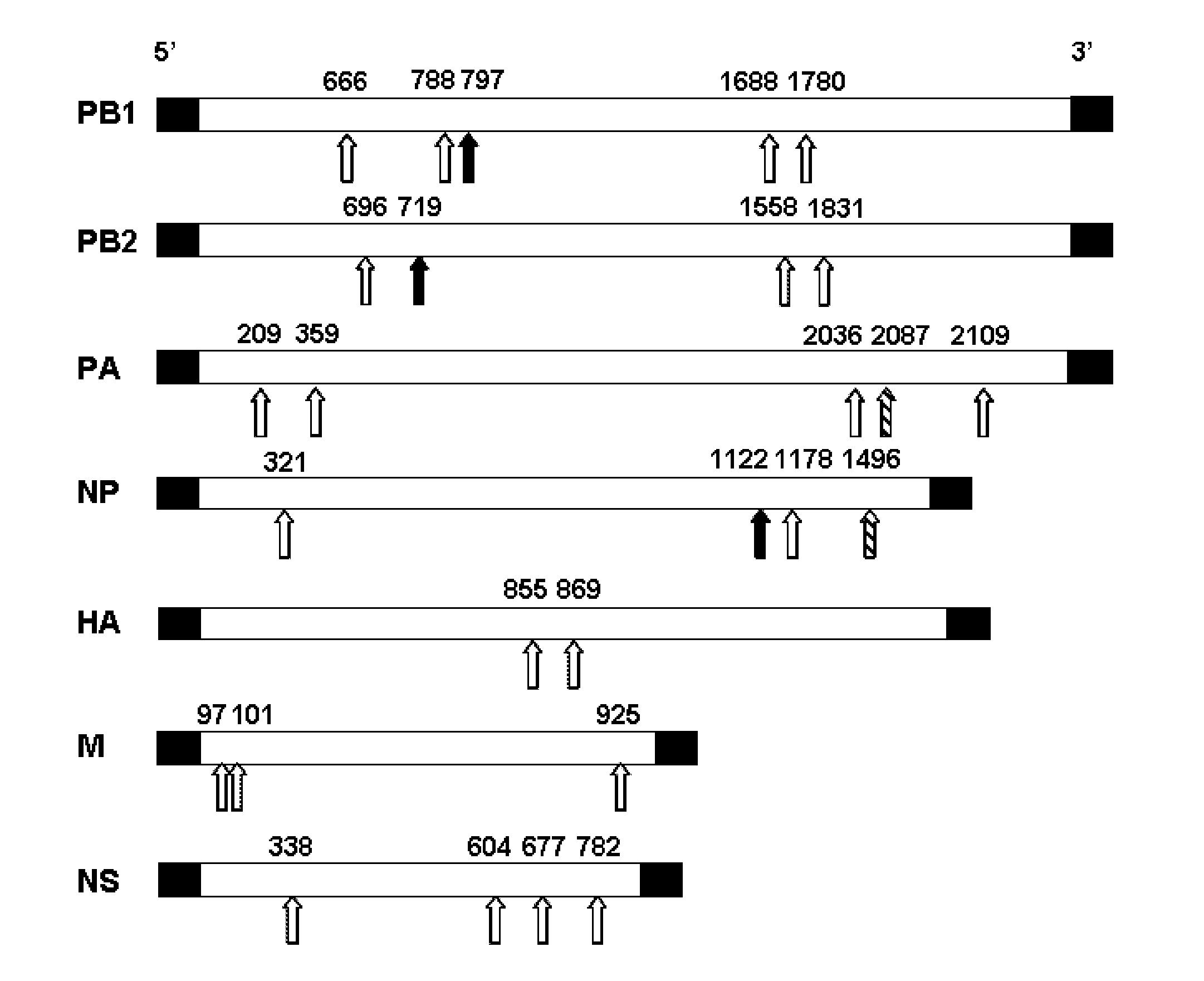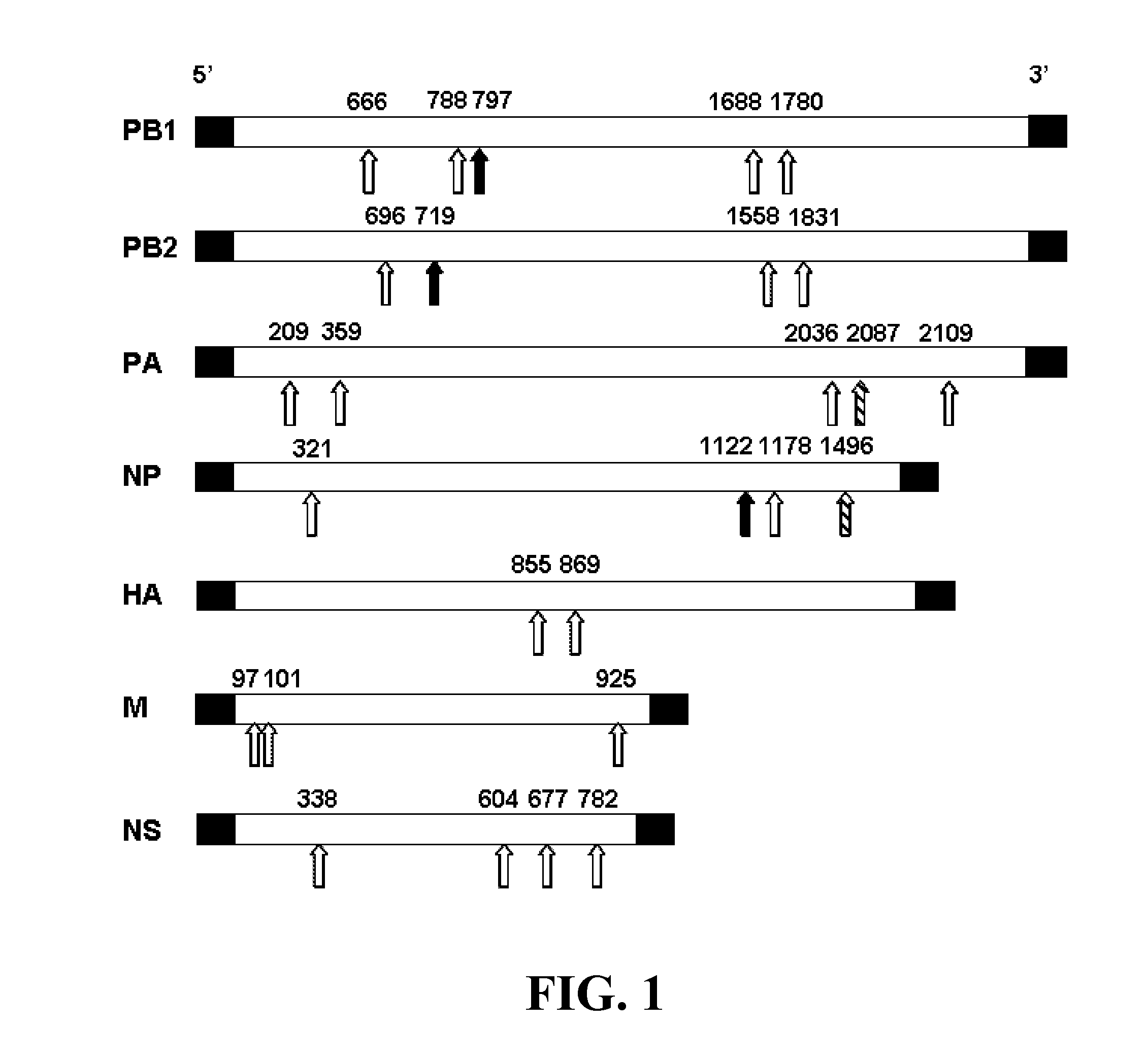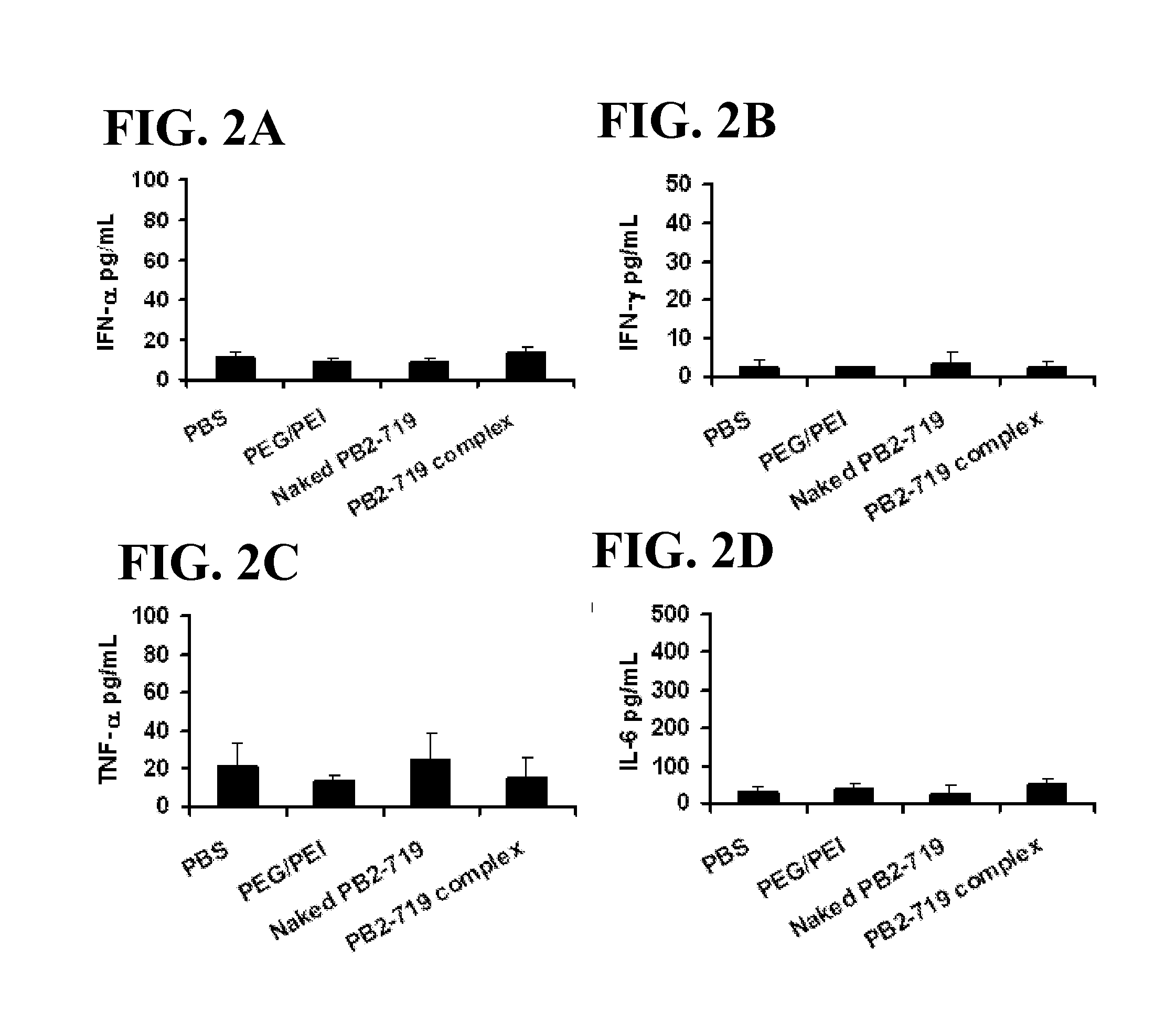siRNA COMPOSITIONS AND METHODS FOR POTENTLY INHIBITING VIRAL INFECTION
a composition and composition technology, applied in the field of sirna compositions and methods for potently inhibiting viral infection, can solve the problem of not offering any significant therapeutic effect, and achieve the effect of less antiviral effects and higher protection against lethal challeng
- Summary
- Abstract
- Description
- Claims
- Application Information
AI Technical Summary
Benefits of technology
Problems solved by technology
Method used
Image
Examples
example 1
siRNAs with the Motif (siRNA-M) Showed Lower Inhibitory Effect than siRNAs without the Motif (siRNA-n) in Cultured Cells
[0157]Twenty-five siRNA duplexes respectively targeting PB1, PB2, PA, NP, M, NS and HA genes of influenza A virus, including 4 siRNAs that contain a novel motif (designated siRNAs-m) and 21 siRNAs that do not contain the motif (designated siRNAs-n), were designed and synthesized (FIG. 1 and Table 1).
TABLE 1Sequences of siRNAs designed and tested in thisstudyName#Forward sequence (5′-3′)PB1-666GACACUGAACACAAUGACAdTdTSEQ ID NO: 1PB1-788GUGAGAAACUUCAGCAAUCdTdTSEQ ID NO: 2PB1-797UUGAGCAAUCUGGACUCCCdTdTSEQ ID NO: 3PB1-1688GAGGGGAUACGCAAAUCCAdTdTSEQ ID NO: 4PB1-1780GGAGGACCAAAUCUAUACAdTdTSEQ ID NO: 5PB2-696GCAUUUGACUCAAGGGACCdTdTSEQ ID NO: 6PB2-719GGGAACAGAUGUACACUCCdTdTSEQ ID NO: 7PB2-1558GAAACCCAGGGAACAGAGAdTdTSEQ ID NO: 8PB2-1831GAUACUGUCCAGAUAAUAAdTdTSEQ ID NO: 9PA-209GAAACACCGAUUUGAAAUAdTdTSEQ ID NO: 10PA-359GACACGGAGGGAAGUUCAUdTdTSEQ ID NO: 11PA-2036GCUUAAUGCGUCUUG...
example 2
siRNAs-M Showed More Pronounced Prophylactic and Therapeutic Effects than siRNAs-n in Animal Models
[0159]To evaluate prophylactic effect, the mice were given intratracheally (i.t.) one dose (100, 50 or 25 μg / dose) of the siRNAs 16-18 hours before the viral challenge (Table 2). The results showed that all mice treated with siRNAs-m (PB1-797, PB2-719, PA-2109 and NP-1122) survived (survival rate=100%) (FIGS. 4a, b, c, and d). In contrast, siRNAs-n showed much lower protective effect in the mouse model. The survival rates of mice treated with 100 μg / dose of PB1-788 (FIG. 4a) and NP-1496 (FIG. 4d) were 30% and 10%, respectively, but dropped to 0% when the mice were given 50 or 25 μg / dose of the siRNAs. Notably, sequences of siRNA-m PB1-797 and siRNA-n PB1-788 are overlapped for 10 nucleotides (nt). All mice died (survival rate=0%) when they were treated with either PB2-696 (FIG. 4b) or PA-2087 (FIG. 4c), although their survival days were 1-2 days longer than the untreated mice. Consiste...
example 3
siRNAs-m Potently Suppressed Viral Replication and Tissue Damage in Lungs
[0161]To further compare the inhibition of viral replication and suppression of tissue damage in lungs between mice treated with siRNAs-m and siRNAs-n, the animals receiving prophylactic treatment were sacrificed at the 6th day post-challenge and their lungs were collected for detections of viral replication and pathological changes. The virus titers tested by TCID50 were undetectable in lung tissues from mice treated with siRNAs-m, while the virus titers in mice treated with siRNAs-n were similar to or even higher than that of the untreated controls (FIG. 5a). Consistently, viral RNA copies measured by real-time RT-PCR were about 50- to 100-fold lower in the lung tissues obtained from mice treated with siRNAs-m than from mice treated with siRNAs-n (FIG. 3b). Histopathological examination of the lung samples further revealed that lung sections from mice treated with siRNAs-m did not show obvious pathological ch...
PUM
| Property | Measurement | Unit |
|---|---|---|
| real time RT- | aaaaa | aaaaa |
| real time RT- | aaaaa | aaaaa |
| time | aaaaa | aaaaa |
Abstract
Description
Claims
Application Information
 Login to View More
Login to View More - R&D
- Intellectual Property
- Life Sciences
- Materials
- Tech Scout
- Unparalleled Data Quality
- Higher Quality Content
- 60% Fewer Hallucinations
Browse by: Latest US Patents, China's latest patents, Technical Efficacy Thesaurus, Application Domain, Technology Topic, Popular Technical Reports.
© 2025 PatSnap. All rights reserved.Legal|Privacy policy|Modern Slavery Act Transparency Statement|Sitemap|About US| Contact US: help@patsnap.com



